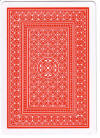Content
In poker, mathematics is one of the most important things that I think you need to know and understand if you want to be a winning player. But to understand it, I think a knowledge of school mathematics is sufficient.
You will learn what "outs", "odds" and "pot odds" mean, which are often used by winning poker players in their vocabulary. No winning poker player would probably do without calculating "outs", "oods" and "pot odds".
Pokerio Outs
Outs are the number of cards that, when turned up, could help you make the poker hand you want in the following rounds. For example.
In your hand:


The flop is out:



So the question is: how many more reels are there that can help you make a single colour combination in the next round ?
Solution:
We see 4 reels: two in our hands and two on the table, on the flop. That's a total of 9 more reels in the deck, which could give us a Colour combination. 13 - 4 = 9 reels in the deck. The answer to this is: we have 9 outs.
Pokerio Odds
Poker odds are the ratio of all the cards you don't get to the cards you do get in the next round
Let's say we have two cards:


The flop opened:



And a question: what are your odds of catching a Colour combination in the next round ?
Solution:
In total, we know that there are 52 cards in the deck. We see five: two in our hand and three on the flop.
Of these five cards, four are of the same suit. So there are still nine cards in the deck to help us make a suit, so we have 9 outs.
There are cards in the deck that don't help us to make a colour combination: out of 52 cards, subtract 5 cards that we know and subtract 9 cards that will help us to get 38 cards that don't help us in the next round.
The ratio of unsuccessful cards to successful cards is: 38 / 9 = 4.222/1
Answer: odds are 4.222/1This means that 1 card next will help us to make a suit, and ~4 cards won't save us.
Below is a table showing the ratios of how many cards we are dealt in the next round - outs.
| OUTS | ODDS from flop to turn 1 card | ODDS from flop to river 2 cards |
| 1 | 46 : 1 | 22.5 :1 |
| 2 | 22.5 : 1 | 11:1 |
| 3 | 15: 1 | 7:1 |
| 4 | 11 : 1 | 5:1 |
| 5 | 8: 1 | 4:1 |
| 6 | 7 : 1 | 3:1 |
| 7 | 6 : 1 | 2.5:1 |
| 8 | 5 : 1 | 2:1 |
| 9 | 4 : 1 | 2:1 |
| 10 | 3.5 : 1 | 1.5:1 |
| 11 | 3,5 : 1 | 1.5:1 |
| 12 | 3 : 1 | 1:1 |
| 13 | 2.5 : 1 | 1:1 |
| 14 | 2.5 : 1 | 1:1 |
| 15 | 2 : 1 | 1:1 |
Pokerio Pot Odds
In poker, pot odds are the ratio of the amount in the pot to the amount you are offered to bet.
For example. The blinds are 100/200. You are in BB position and your opponent is in SB position. The pot is 300 (your 200 blind and your opponent's 100 small blind).
Your cards:


Opponent's cards:


Opponent's word: He raises to 400. The pot is now 600.
To play, you need to call 200 or beat the bet. Since the total pot is 600 (your 200, your opponent's 100 blind, and your opponent's 300 over) and the suggested bet size is 200, the pot odds are 600/200 = 3/1.
How to Adjust Poker Outs, Odds and Pot Odds to the Poker Table ?
For example. The blinds are 100/200. You are in BB position and your opponent is in SB position. The pot is 300 (your 200 blind and your opponent's 100 small blind).
Let's say we have :


Opponent's cards:


Opponent's word: and he calls the bet. So the total pot is now 400. You check and the flop is out:



Opponent's word: He bets 200 on a 400 pot. 600 in total. The question is: Is it profitable to call 200 and catch the colour combination ?
Solution:
We have 9 cards to help us with the suit. So, let's look at the table to see what the odds are for the 9 outs:
| OUTS | ODDS from flop to turn 1 card | ODDS from flop to river 2 cards |
| 1 | 46 : 1 | 22.5 :1 |
| 2 | 22.5 : 1 | 11:1 |
| 3 | 15: 1 | 7:1 |
| 4 | 11 : 1 | 5:1 |
| 5 | 8: 1 | 4:1 |
| 6 | 7 : 1 | 3:1 |
| 7 | 6 : 1 | 2.5:1 |
| 8 | 5 : 1 | 2:1 |
| 9 | 4 : 1 | 2:1 |
| 10 | 3.5 : 1 | 1.5:1 |
| 11 | 3,5 : 1 | 1.5:1 |
| 12 | 3 : 1 | 1:1 |
| 13 | 2.5 : 1 | 1:1 |
| 14 | 2.5 : 1 | 1:1 |
| 15 | 2 : 1 | 1:1 |
We can see from the table that the odds are 4 to 1. So we need a minimum pot odds of 4 : 1 to be profitable. And our pot odds are: 600 : 200 = 3 : 1. So it is unprofitable to call and catch the colour combination. If we had 12 outs, it would be neither profitable nor unprofitable to call. If we had 13 or more outs, it would be profitable to call.
